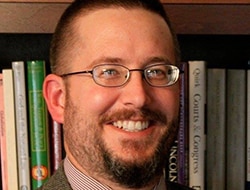
While the oldest of the Alphas is only 9, research over the last few years has shown that most young Catholics today lose their faith between the ages of 10 and 13. It’s a particularly fraught time of life, coinciding almost exactly with the middle-school years. (It calls into question the very concept of middle school, but that’s a column for a different time and place.) In this age of electronic communications, it’s also the time when many, if not most, American children get their own cellphone — a misnomer because these devices are really, as Steve Jobs noted when introducing the iPhone in 2007, handheld computers with unlimited access to the internet.
No matter what efforts we make to limit screen time and establish parental controls over the content that they can access, our children today are subject to a much wider array of temptations than we were in the past — all in a device that they have close at hand 24 hours a day.
The greater danger, however, may lie less in what they are exposed to than in what they aren’t. Even among families who are weekly Mass-goers, the average young Catholic spends only an hour per week in church, compared with close to 10 hours per day on the internet. Throw in some prayers around meals, and maybe an occasional family rosary, and that might rise to as much as an hour-and-a-half per week of time devoted to God.
As I noted in my last column, a desire for ritual is built into the very fiber of our being. The best way to overcome a child’s dislike of school is not to find excuses to take him out of class, but to get him up at the same time every morning and make sure he gets to school. He may continue complaining, but he’s less and less likely to mean it; the complaint becomes part of the ritual itself.
Those who grew up in families that sat down to dinner together every night are more likely to continue that ritual when they have children of their own. Multiple generations of a family take the same summer vacation. If your grandparents ate ham for Easter and turkey for Christmas, you probably don’t eat lamb and goose.
I could multiply examples ad infinitum, but you get the point: Our lives are composed of rituals, big and small. It’s not a question of whether we will take part in rituals; it’s only a matter of what those rituals are — and how significant they seem to us and to others.
If our children perceive that we take something seriously, they’ll take it seriously. We may not even realize how seriously they take it, unless they get into a fight at school over politics or the Cubs. But if our Mass attendance is perfunctory, and they never hear us talk about Christ — or, more importantly, don’t act as if our relationship with him is at the heart of everything we do — then we shouldn’t be surprised when they find something else to fill that hour on Sunday morning.
Liturgy lies at the heart of our lives as Christians. And Christian liturgy is simply a ritual that draws us closer to Christ by making his sacrifice on Calvary present to us once again. More than a family vacation, more than the family dinner, more than the Easter ham — this is the ritual that should be at the heart of our lives. Put it there, and there’s a much better chance that your children will, too.
Scott P. Richert is publisher for OSV.





